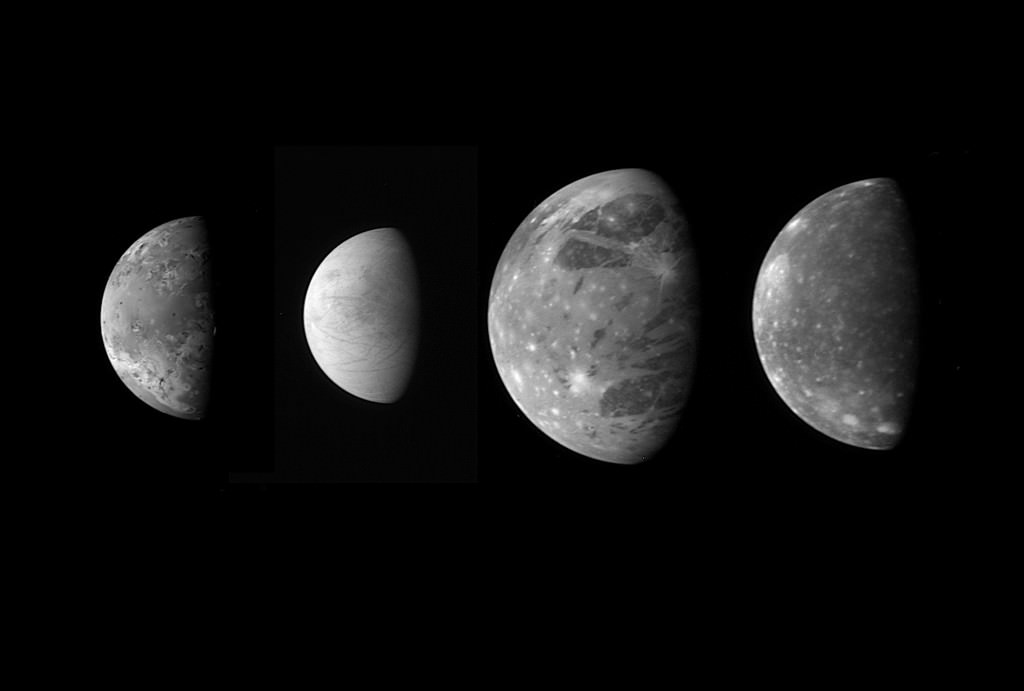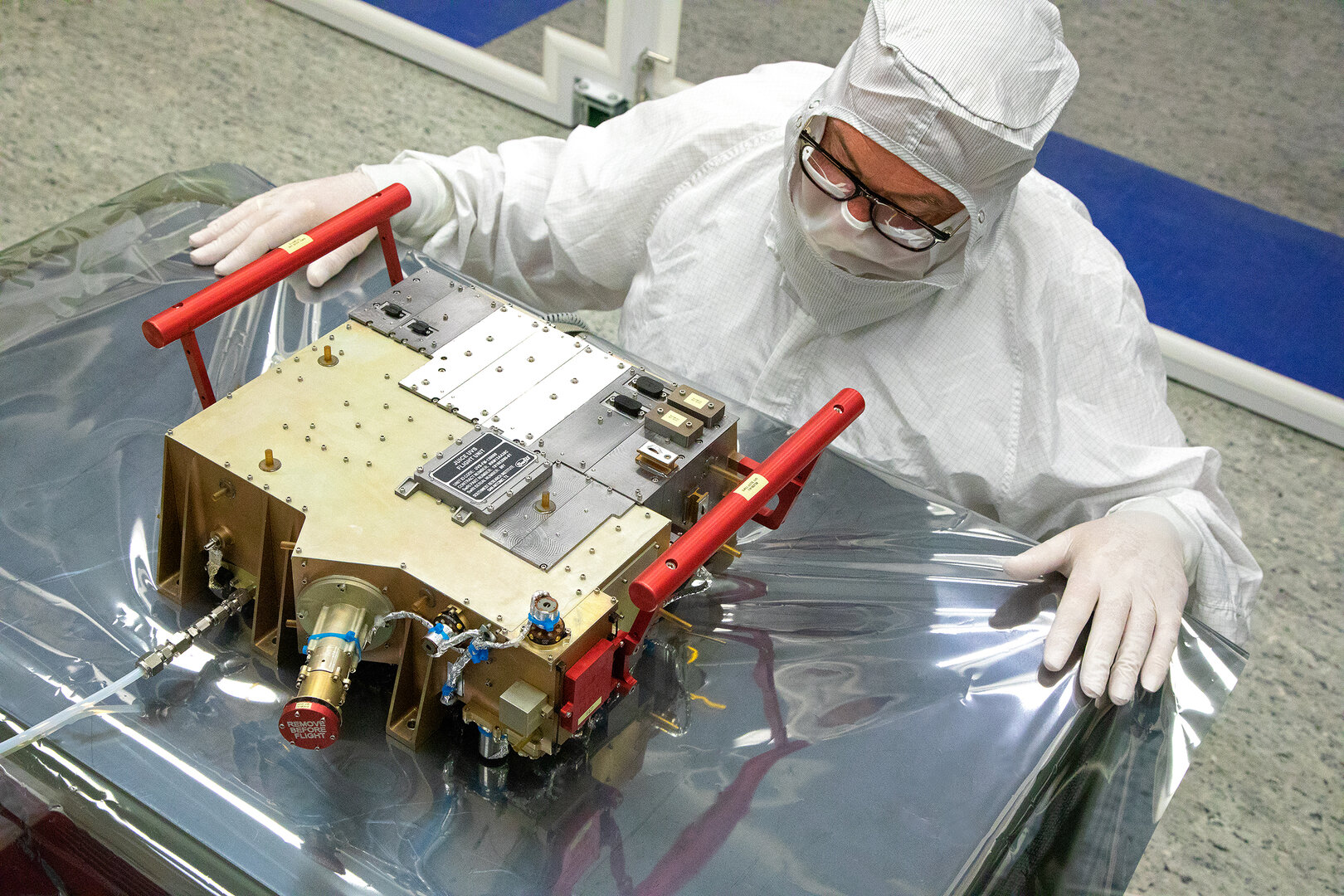The space agencies of the world have some truly ambitious plans in mind for the coming decade. Alongside missions that will search for evidence for past (and maybe present) life on Mars, next-generation space telescopes, and the “return to the Moon”, there are missions will which will explore Jupiter’s moons for signs of extra-terrestrial life. These include the ESA’s JUpiter Icy Moon Explorer (JUICE), which will launch in 2022.
As part of the agency’s Cosmic Vision 2015-2025 program, this spacecraft will conduct detailed observations of Jupiter and three of its large moons – Ganymede, Callisto, and Europa – to see if they could indeed harbor life in their interiors. Late last month (Feb. 25th), the first instrument that will fly aboard JUICE and aid in these efforts was delivered and began the process of integration with the spacecraft.
This instrument is known as the ultraviolet spectrograph (UVS), which was designed and built by the Southwest Research Institute (SwRI) in San Antonio, Texas. The UVS instrument is now on the premises of the manufacturer’s (Airbus SE) Defence & Space Division in Friedrichshafen, Germany, where it will be integrated onto the spacecraft.

As part of JUICE’s advanced suite of scientific instruments, UVS will conduct close-up observations of Europa, Ganymede, and Callisto, and record the UV light they emit in the 55 to 210 nanometer (nm) range. In so doing, the instrument will reveal the composition of their surfaces and atmospheres, enabling investigators to see how these icy bodies interact with Jupiter and its giant magnetosphere.
Steven Persyn, an assistant director of SwRI’s Space Science and Engineering Division, is also the project manager for JUICE-UVS. As he stated in a recent SwRI press release:
“It has been a huge team effort to get this instrument – known as JUICE-UVS – built, tested and delivered. In 2013, UVS was selected to represent NASA on the first ESA-led mission to an outer planet. Meeting both NASA’s and ESA’s specifications was challenging, but we did it.”
In total, JUICE will be equipped with ten advanced instruments that will enable all kinds of scientific experiments. The UVS is part of JUICE’s remote sensing package, which includes the JANUS optical camera, the Moons and Jupiter Imaging Spectrometer (MAJIS), and the Sub-millimeter Wave Instrument (SWI) – which will map Jupiter’s clouds and the surfaces of its moons to determine their composition and measure their temperatures.
Next up is the spacecraft’s geophysical package, which consists of the GAnymede Laser Altimeter (GALA), Radar for Icy Moons Exploration (RIME), and the Gravity & Geophysics of Jupiter and Galilean Moons (3GM) radio science experiment. These will allow mission scientists to explore the surface and subsurface of the moons, probe their atmospheres (and that of Jupiter), and measure their gravity fields.

Last, there is the in-situ package, which is comprised of a magnetometer (J-MAG), the Particle Environment Package (PEP), the Radio & Plasma Wave Investigation (RPWI) instrument. These will allow the JUICE team to study the particle environment in the Jupiter system and the ionized particles (aka. plasma) created by interactions between the moon’s atmospheres and Jupiter’s magnetic field.
There’s also a spacecraft telecommunications experiment known as the Planetary Radio Interferometer & Doppler Experiment (PRIDE). This instrument will use ground-based radio telescopes and a process known as Very Long Baseline Interferometry (VLBI) to precisely determine the spacecraft’s position and velocity.
The SwRI has a long history of providing support and leadership to NASA missions, which include the New Horizons mission, and the Juno mission to Jupiter. Led by SwRI members Alan Stern and Scott Bolton, these missions accomplished the first-ever flyby of Pluto and a KBO (Arrokoth) and provided the most detailed study of Jupiter’s atmosphere and interior to date (respectively). As Persyn said:
“JUICE-UVS is the fifth in this series of SwRI-built ultraviolet spectrographs, and it benefits greatly from the design experience gained by our team from the Juno-UVS instrument, which is currently operating in Jupiter’s harsh radiation environment. Each successive instrument we build is more capable than its predecessor.”
The other nine instruments are currently being tested by their respective teams and will be delivered for integration later this year. The UVS constitutes NASA’s contribution to the mission, whose development was led by the SwRI and included additional researchers from the University of Colorado Boulder, the SETI Institute, and international partners from the UK, Belgium, and France.
JUICE is scheduled to launch sometime in 2022 and will arrive it will arrive at Jupiter in 2029. It will be joined soon thereafter by NASA’s Europa Clipper, which is scheduled to launch by 2024 and will arrive around Jupiter by 2027 or 2030 (depending on the launch profile selected). These two missions will assist each other by conducting complementary searches for biosignatures on Jupiter’s icy moon’s.
Ever since the Voyager probes passed through the Jupiter system in 1979, scientists have speculated about the possibility that there could be an interior ocean beneath the icy surface of Europa, and possibly life. After over four decades of waiting, humanity may finally have a chance to see if this could be the case. At long last, a chance to learn whether or not we are alone in the Universe!

